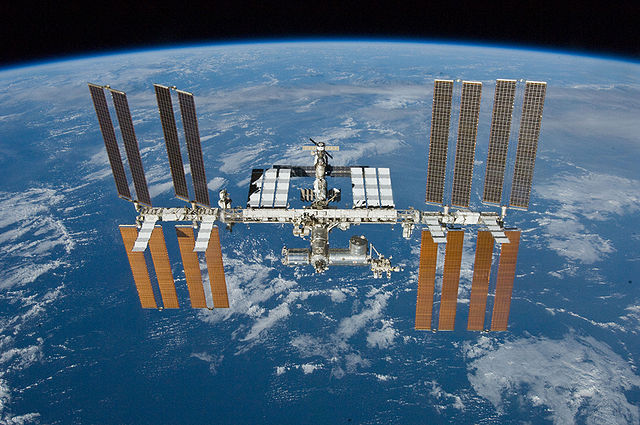Mayan structures revealed by lidar scans | Photo: Canuto/Auld-Thomas/PACUNAM (via AP)
This week we’ve got the results of a lidar flyover of the Mayan Lowlands, an accidental success from SpaceX ahead of this week’s Falcon Heavy test flight, and an unexpectedly long spacewalk by two Russian cosmonauts! It’s the top of the science and technology news for Sunday, February 4, 2018!
Hidden Cities
A team of archaeologists working in the Petén department (region) of Guatemala have used aerial LIDAR scanning to reveal the truly massive extent of Mayan civilization hidden beneath the region’s jungles and fields. Technically, they already knew it was there: the reason they scanned it was to see how much of the lost civilization’s works remained. But what they found shocked them: tens of thousands of buildings, at least four ceremonial centers (including central squares and pyramids), evidence of state-level infrastructure projects like the redirection of rivers for agriculture. According to AP, they now think as many as ten million people lived in the Maya Lowlands region, two to three times more than had previously been estimated, meaning that vastly more land cultivation was needed to feed them. It’s an amazing revelation about the scale of pre-Columbian civilization in the area, and should stand as a reminder of how fragile civilization can really be. You can read more on the discoveries at the Washington Post.

Splashdown
While we’re all waiting for Tuesday’s Falcon Heavy test launch (launch… explosion… somewhere in between?) let’s take a moment to look at how things can accidentally go well, sometimes: on January 31, SpaceX launched a military satellite for Luxembourg, the company’s ninth SES-contracted launch, with the intention of discarding the first stage in the ocean. It wasn’t going to have enough fuel left to land, they thought, so they decided to use it to test a high-G propulsive landing. Falcon first stages typically use just one of their nine engines for the landing, and pull about three Gs before coming to rest on a drone ship or landing pad. This time, they thought they’d try using three engines, pulling roughly ten Gs, but using less fuel. They figured they’d get some useful data, and then the thing would burst into a thousand pieces when it hit the water. Except it didn’t. Somehow it not only survived the intense burn, but it landed in the water and… didn’t break. So now the company’s heading out to retrieve it and study what went so unexpectedly right. Here’s hoping Tuesday goes that well. You can read more about the launch at NASA Spaceflight.

Record Russian Spacewalk
Alexander Misurkin and Anton Shkaplerov set a new record Friday for the longest spacewalk by Russian Cosmonauts, as they endeavoured to replace an electronics box for a defunct antenna. The antenna was originally included on the module at its launch in 2000, intended for communication with a Russian satellite network. Budget problems and other delays, however, meant that the Luch satellite network took nearly two decades longer than planned to get up and running, and the electronics were so old as to no longer be compatible. The spacewalk was originally scheduled for six and a half hours, but because the components were installed on the ground and not designed for repair work while wearing thick-gloves spacesuits, it took nearly two hours longer than planned, setting a record at eight hours and thirteen minutes. Unfortunately, once the repair work was done, the antenna itself failed to redeploy properly, and is currently functioning—but probably sub-optimally, as by all reports the four foot dish is facing 180 degrees off of where it ought to be. One presumes contingency plans are being dusted off and we’ll hear more about what’s to become of the dish in the coming weeks, but in the meantime it’s worth congratulating Misurkin and Shkaplerov on a marathon spacewalk. You can read more details on the story over at Space.com.
And that’s the top of the news for this week. Check back next time for more!
***
Thanks again for reading. Except for the very *very* occasional tip, we only get paid in my own (and your) enthusiasm, so please like This Week In Tomorrow on Facebook, follow us on Twitter @TWITomorrow, and tell your friends about the site!
If you like our posts and want to support our site, please share it with others, on Facebook, Twitter, Reddit — anywhere you think people might want to read what we’ve written. If there’s something you think we’ve missed or a story you’d like to see covered, drop us a line! Thanks so much for reading, and have a great week.
***
Richard Ford Burley is a human, YA author, and doctoral candidate at Boston College, as well as Deputy Managing Editor at Ledger, the first academic journal devoted to Bitcoin and other cryptocurrencies. In his spare time he writes about science, skepticism, feminism, and futurism here at This Week In Tomorrow.

